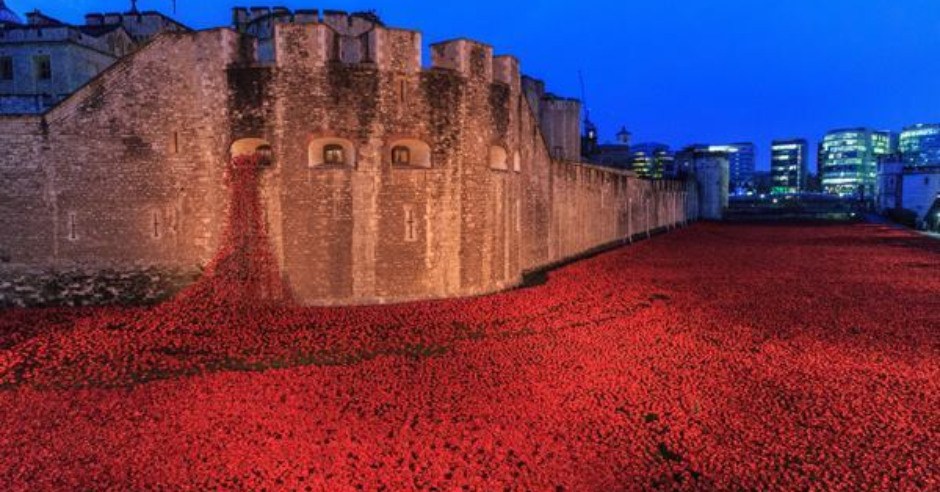
An installation that honors the British military personnel killed in World War I will come to a close on Nov. 11, when the final ceramic poppy is placed in a field of more than 888,000 just like it commemorating Remembrance Day in the United Kingdom and the other Commonwealth nations. Designed by British ceramic artist Paul Cummins and production designer Tom Piper, the project, titled “Blood Swept Lands and Seas of Red,” was created through the progressive addition of 888,246 ceramic poppies to the dry moat surrounding the Tower of London. The first poppy was placed on July 17 and the exhibition opened on Aug. 5, marking 100 years since British involvement in the conflict commenced.
Poppies are a politically agnostic symbol of remembrance in the U.K., and their use in commemorating military deaths, particularly those of the First World War, was inspired by a poem referencing their growth atop the graves of soldiers who died on the Western Front. Beyond their use at the Tower, paper and metallic poppies are often pinned to lapels in tribute.

Following the close of the exhibition, two of its components will continue on a U.K. tour from 2015 to 2018. The pieces will then be gifted to the Imperial War Museums in London and Manchester. The large-scale features are the Weeping Window (shown, above), in which a cascade of poppies flows down from a window 20 feet above the ground, and the Wave, wherein a swath of poppies swells from the moat to form a small arch over the tower’s entrance.
Each evening since the installation’s opening the names of 180 unique British WWI military fatalities are read aloud from the Tower’s terrace. Available for purchase and dedication to a current or past service member, the poppies sold out and a percentage of the proceeds from their sales were distributed among six military-focused British charities.
